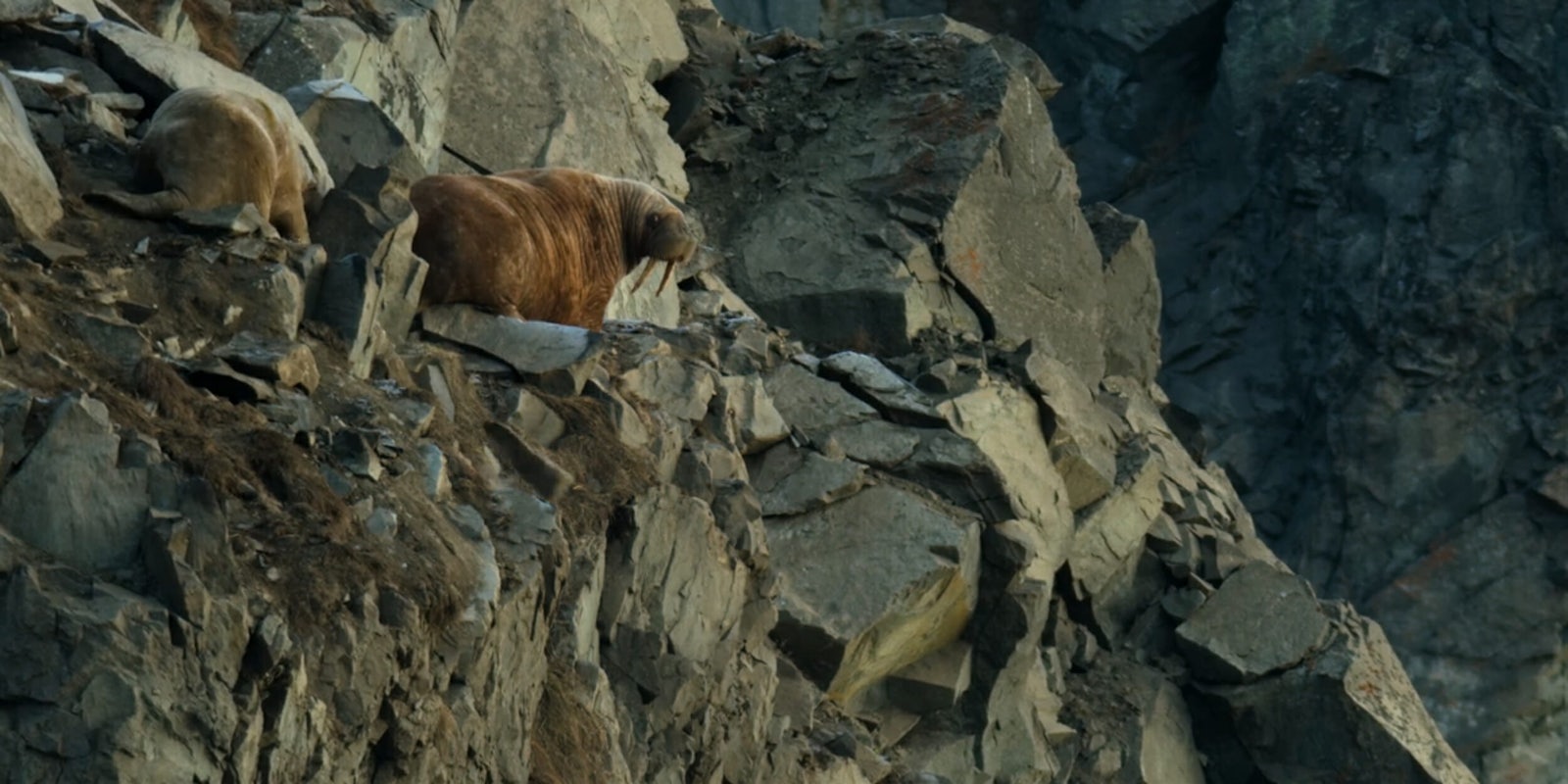Our Planet, Netflix’s new nature documentary series, is full of majestic creatures and gorgeously shot tableaus, covering the frozen tundra, deserts, jungles, and forests. But the scene people are talking about is one in which several walruses climb up a cliff and apparently fall to their deaths.
In the episode “Frozen Worlds,” Netflix’s description is upfront: “On the unforgiving frontier of climate change, polar bears, walruses, seals, and penguins fins their icy Edens in peril.” A gathering of walruses on a Russian beach (known as a haul-out) is shown near the end of the episode, and as narrator David Attenborough explains, they’re there out of “desperation.” There’s a lack of ice. The beach is overcrowded. In a possible quest to get away from the stampedes, some walruses climb up the 200-foot cliffs, but their massive bodies can’t always balance on the jagged rocks, and we see several of them tumble down the cliff when they try to make their way back to the ocean.
The Atlantic spoke with Our Planet producer Sophie Lanfear, who stated a similar refrain: “This is the sad reality of climate change. They’d be on the ice if they could.”
On Twitter, people expressed their sadness over the scene and some assumed this was some sort of mass walrus suicide in the face of climate change, but the Atlantic also cited a similar event in southwestern Alaska in 1996, in which roughly 60 walruses fell from a cliff. University of Alaska Fairbanks researcher Lori Polasek told the Atlantic: “Walruses have shown similar behavior on the U.S. coastline when space and ice were not an issue, and the reason is unknown.”
But obviously much has changed over the last decade, and the reasons why are more known. Our Planet takes a different approach in how it conveys that. In many nature documentaries, we’re meant to marvel at wildlife or cheer for the prey to outrun the predator. (Remember that viral iguana-snake chase from Planet Earth II?) In the series intro, Attenborough asserts that Our Planet will “celebrate the natural wonders that remain, and reveal what we must preserve to ensure people and nature thrive,” adding an element of uncertainty to what it’s documenting.
In the “Jungles” episode, we’re told Borneo has lost more than half of its jungle in the last 50 years, and the Philippines has suffered a similar fate. Orangutans have developed a complex system of learning from babies watching their mothers, as well as tool-making. This unique evolution could be wiped out if the jungles are too. We’re told 100 orangutans are lost a week as a result of “human activity” and their diverse ecosystems are disappearing too.
If you have watched the walrus sequence in #OurPlanet and want to know what you can do to help then watch this short film https://t.co/LEsxChvRXT
— Sophie Lanfear (@sajlanfear) April 5, 2019
Lanfear told the New York Times that this approach was by design: “The only reason I was interested in working on Our Planet is that it had conservation very much at the heart of the series. Often it’s a last-minute thing—two lines of commentary at the end of the show. To me, it’s about designing the whole structure of the film with a conservation message, and having the visual kinds of sequences that show you, not tell you, what is going on with the world.”


